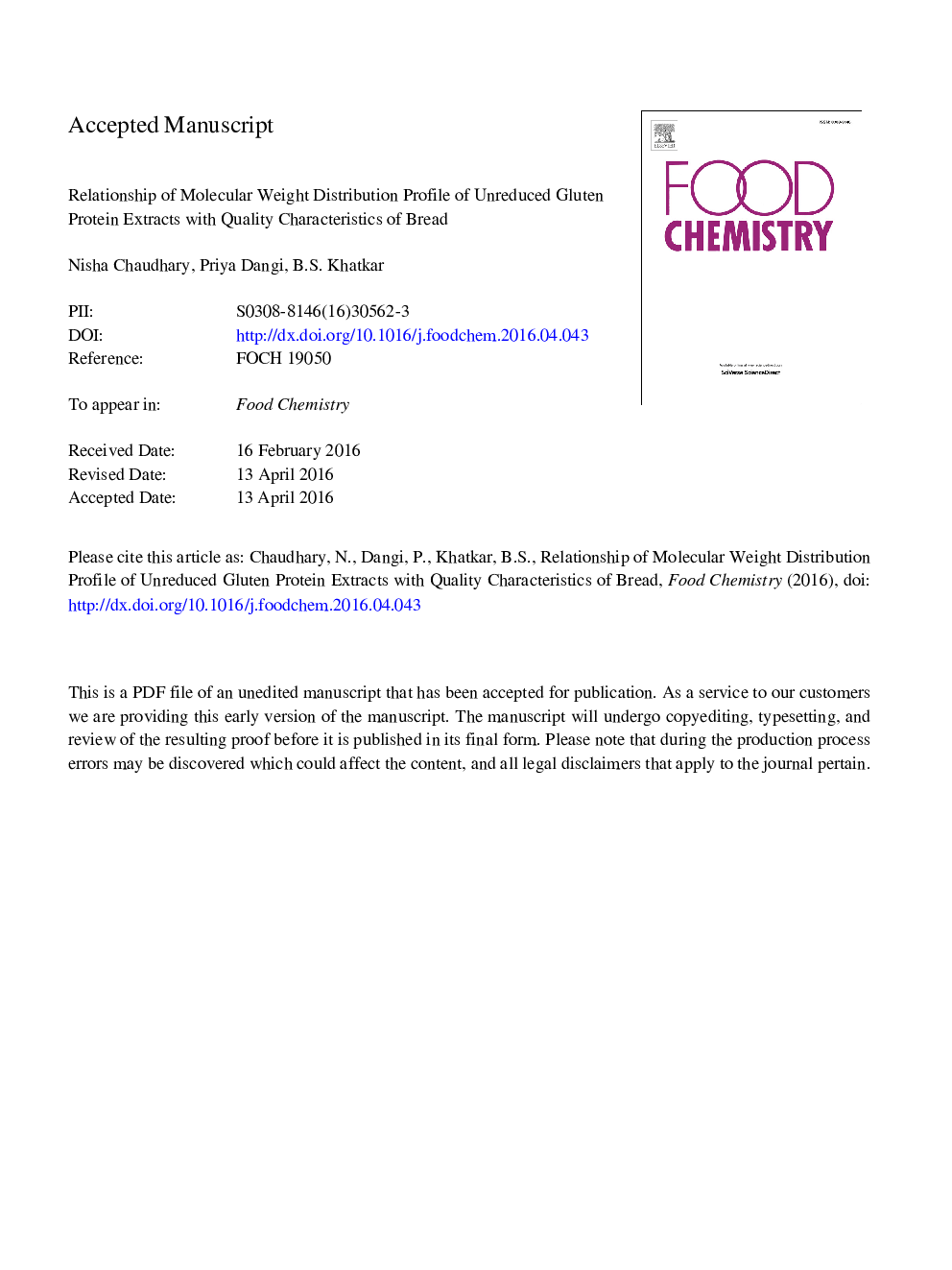| Article ID | Journal | Published Year | Pages | File Type |
|---|---|---|---|---|
| 7588256 | Food Chemistry | 2016 | 26 Pages |
Abstract
A statistical correlation was established among the molecular weight distribution patterns of unreduced gluten proteins and physicochemical, rheological and bread-making quality characteristics of wheat varieties. Size exclusion chromatography fractionated the gluten proteins apparently into five peaks. Peak I signified glutenins (30-130 kDa), peak II as gliadins (20-55 kDa), peak III as very low molecular weight monomeric gliadins (10-28 kDa), peak IV and V, collectively, as albumins and globulins (<10 kDa). Peaks I and II had appreciable effects on dough development time (r = 0.830ââ and r = â0.930ââ) and dough stability (r = 0.901ââ and r = â0.979ââ). Peak I was associated with R/E ratio (r = 0.745ââ), gluten index (r = 0.959ââ), and gliadin/glutenin ratio (r = â0.952ââ), while peak II influenced inversely as expected. Peak I exhibited positive statistical significance with bread loaf volume (r = 0.848ââ); however, peak II had negative (r = â0.818ââ) impact. Bread firmness increased with increment in peak II (r = 0.625ââ), and decreased with accretion in peak I (r = â0.623ââ).
Keywords
Related Topics
Physical Sciences and Engineering
Chemistry
Analytical Chemistry
Authors
Nisha Chaudhary, Priya Dangi, B.S. Khatkar,
